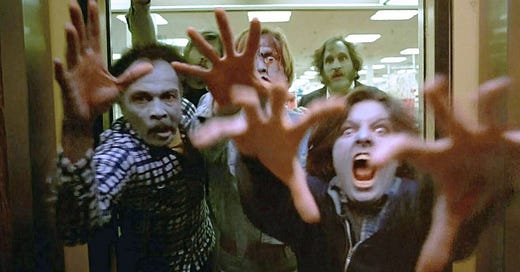This essay was written at the dawn of zombie formalism, so-called, for Spike Magazine, and later re-printed in my book Bad Writing. At the time, much of the discourse animating this discussion just felt very contrived to me—old-fashioned philistinism with an anti-market varnish. Though it is true that I’m a fan of gestural abstraction, I wasn’t trying to deny that there is such a thing as good and bad gestural abstraction. Rather, what felt annoying and obnoxious to me about the “zombie formalism” crit trend was the underlying contention that all gestural abstraction being produced at that particular moment was bad in terms of its quality and that all its practitioners were assumed to be indulging for purely cynical, get-rich-quick reasons. This felt like lazy criticism to me, and also hypocritical; coming, as it did, during a time when art crit was increasingly moribund, this was a way for a few critics to make a loud stink and draw attention to themselves. (No parallels to the present intended.) It was also the period when I was working on my own PhD in art criticism and developing my ideas on object-oriented writing—ideas that inevitably bled into my attack on the zombies…
A silver surface presents itself: Jacob Kassay’s Untitled (2010). A brief, cursory glance yields an immediate dismissal: it is but another monochrome, a type of painting we are long accustomed to seeing, one that reached its peak of novelty or radicality long ago. Yet by forcing yourself to look long enough, to enter into the painting and the world it postulates, a whole other reality emerges. You discover that the painting is not flat at all, and behind the illusion of depth created by a series of contrasting hues within that single color, silver – a depth evoked in the way the darkness of the left side bleeds splotchily into the right, crescendoing into a brightness approaching pure white – a whole range of mysteries becomes visible. Is that an image, perhaps a face, struggling to emerge from beneath the blanket of color? Whatever it is, it is spectral. It is presence itself, yearning to break through the surface into a coherent and enunciated form, yet trapped in the confines of withdrawal, of feigned existence.
Kassay is one of the painters charged with producing “zombie formalism,” which has become something of an art world buzz phrase in recent years, derogatorily referring to (mainly younger) artists engaged in abstract painting. The essence of the argument, introduced by art critic Walter Robinson and popularized by his colleague Jerry Saltz in the widely read essay “Zombies on the Walls,” is that all these works look the same, their manufacture is simple, they are devoid of originality and craftily deployed to fulfill a market craving that resonates with high-end contemporary interior design. That they are, in some essential sense, trite and superficial.
Keep reading with a 7-day free trial
Subscribe to Travis Jeppesen to keep reading this post and get 7 days of free access to the full post archives.



